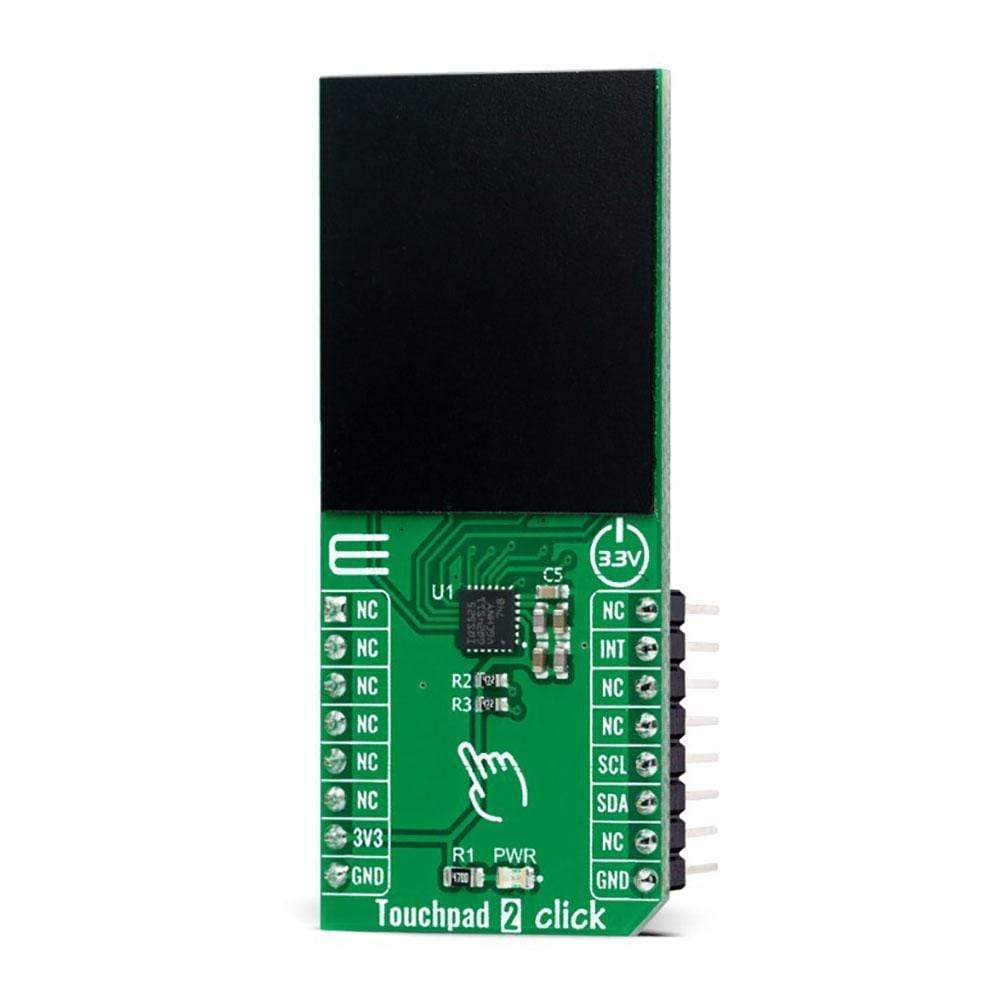
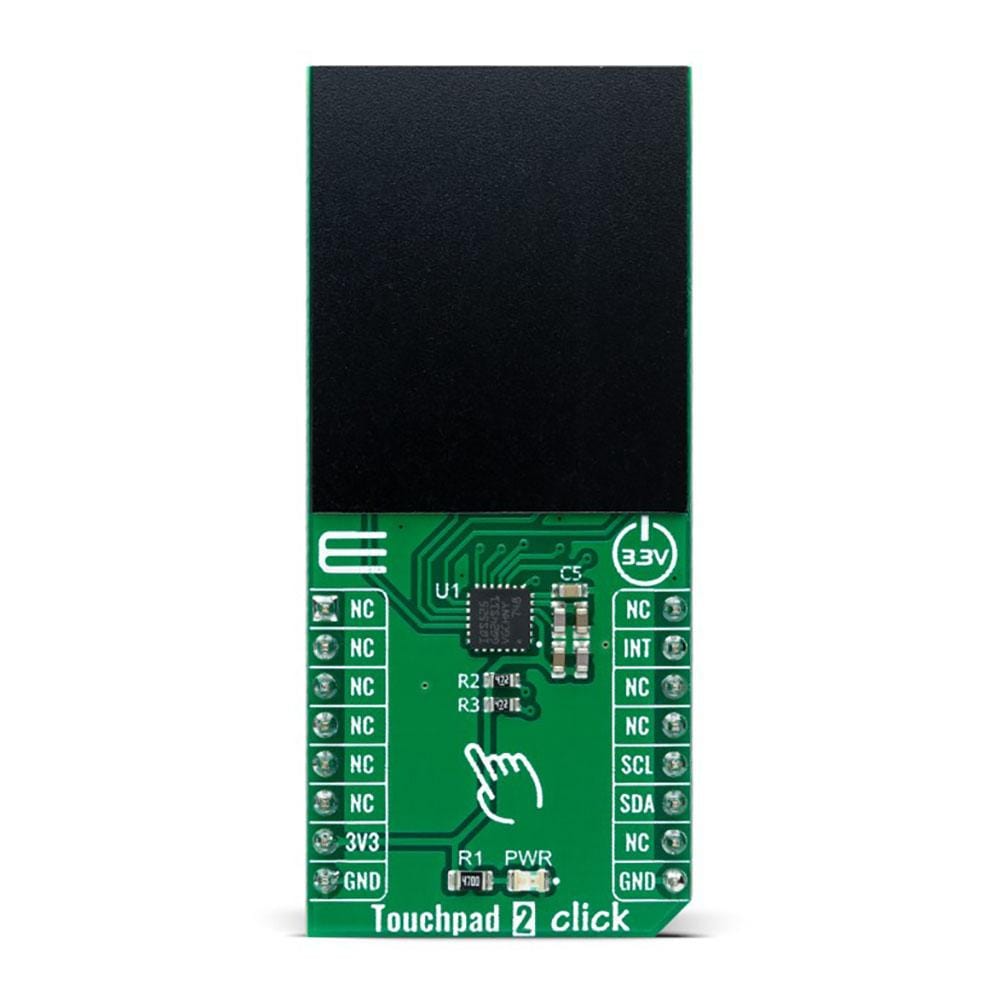
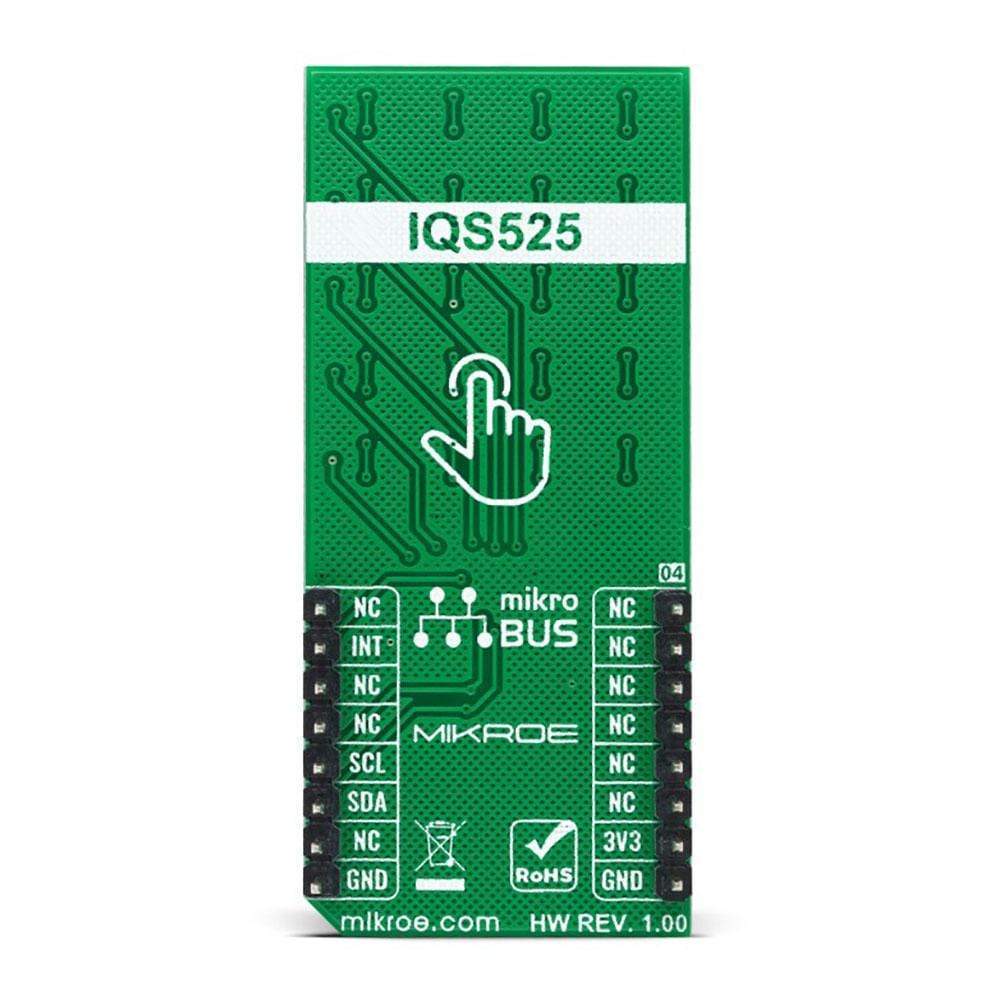
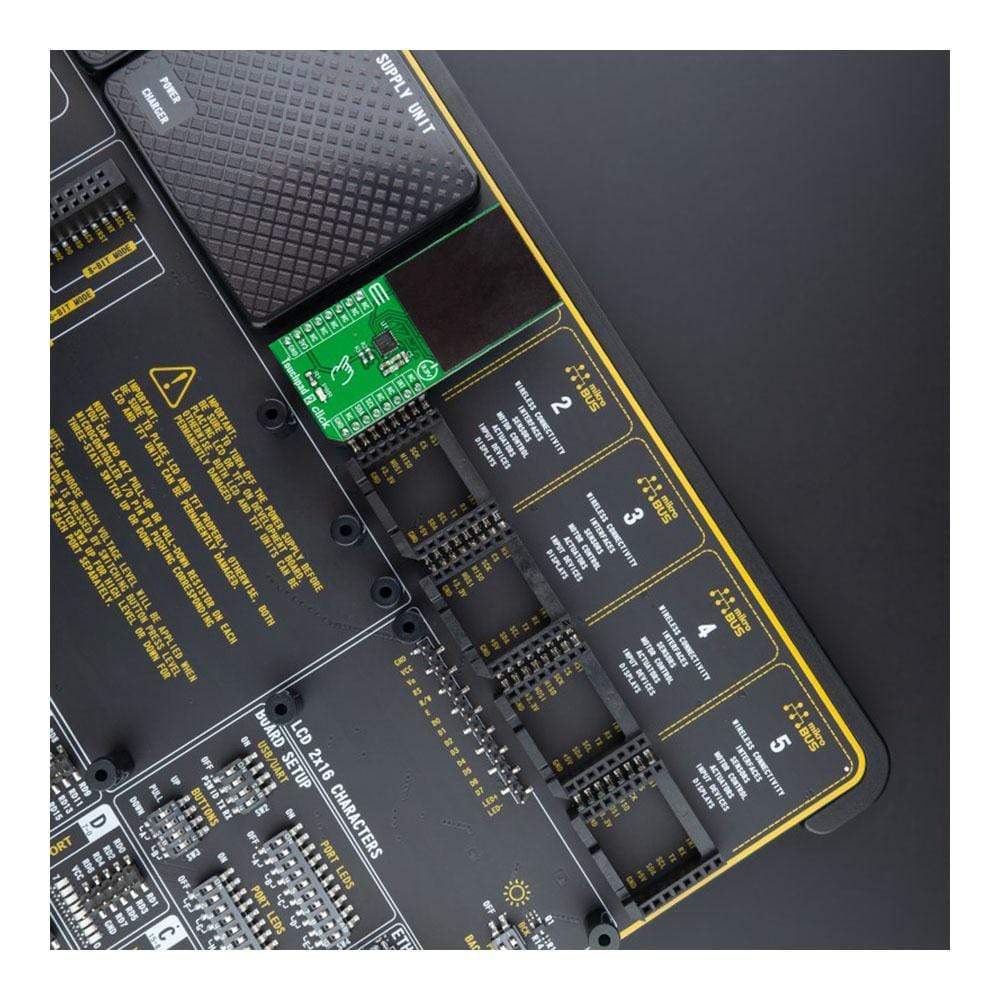
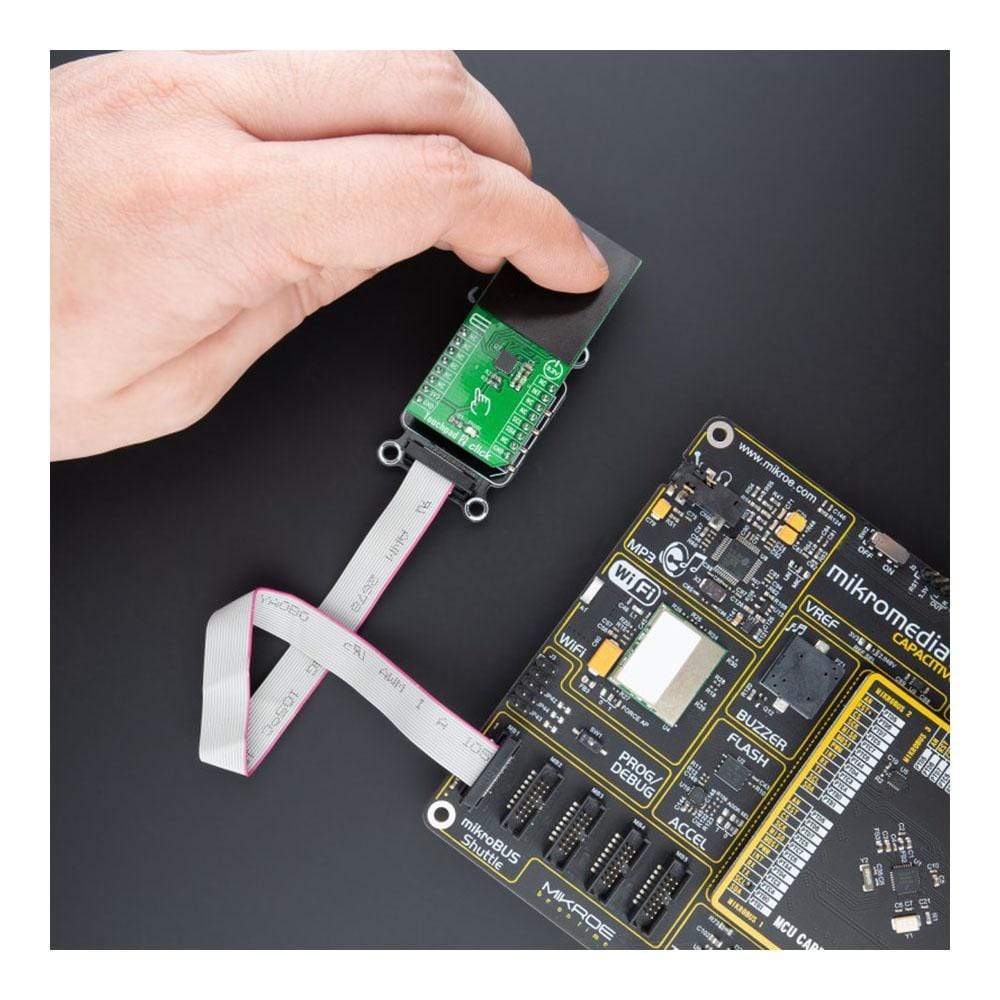
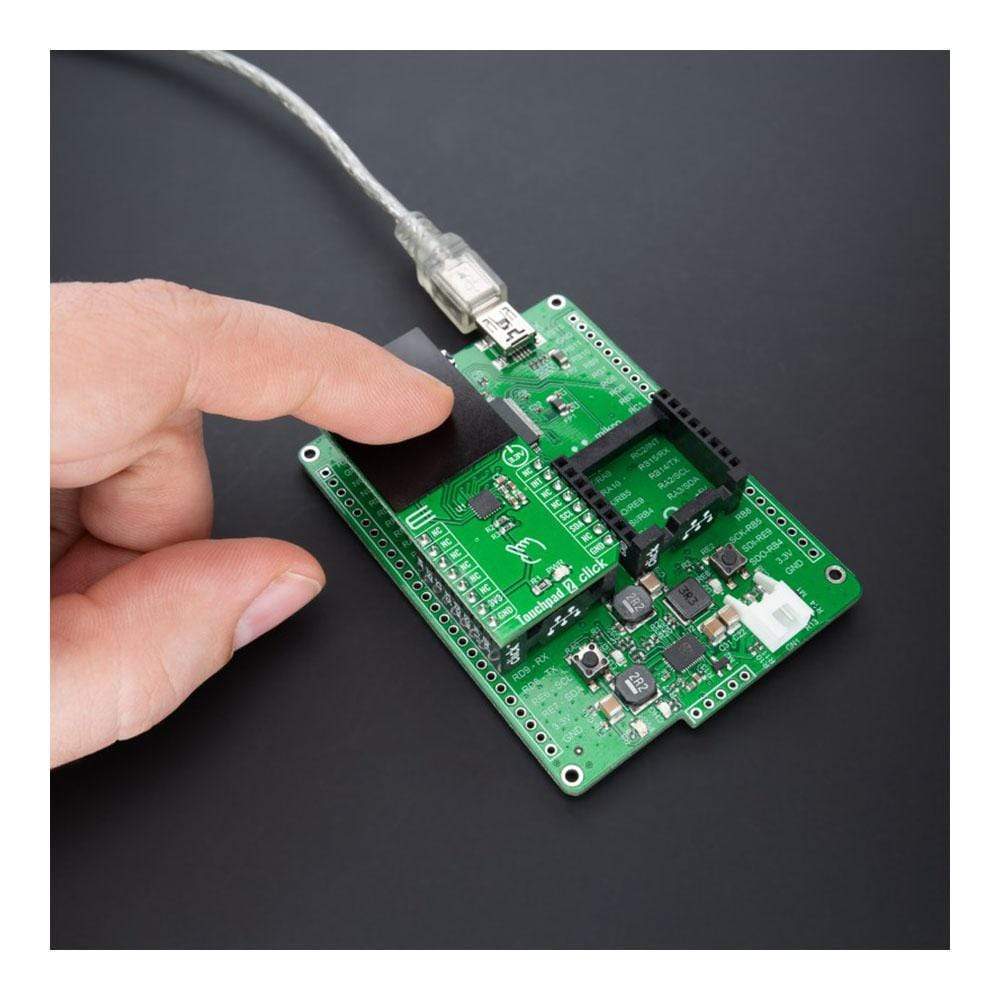
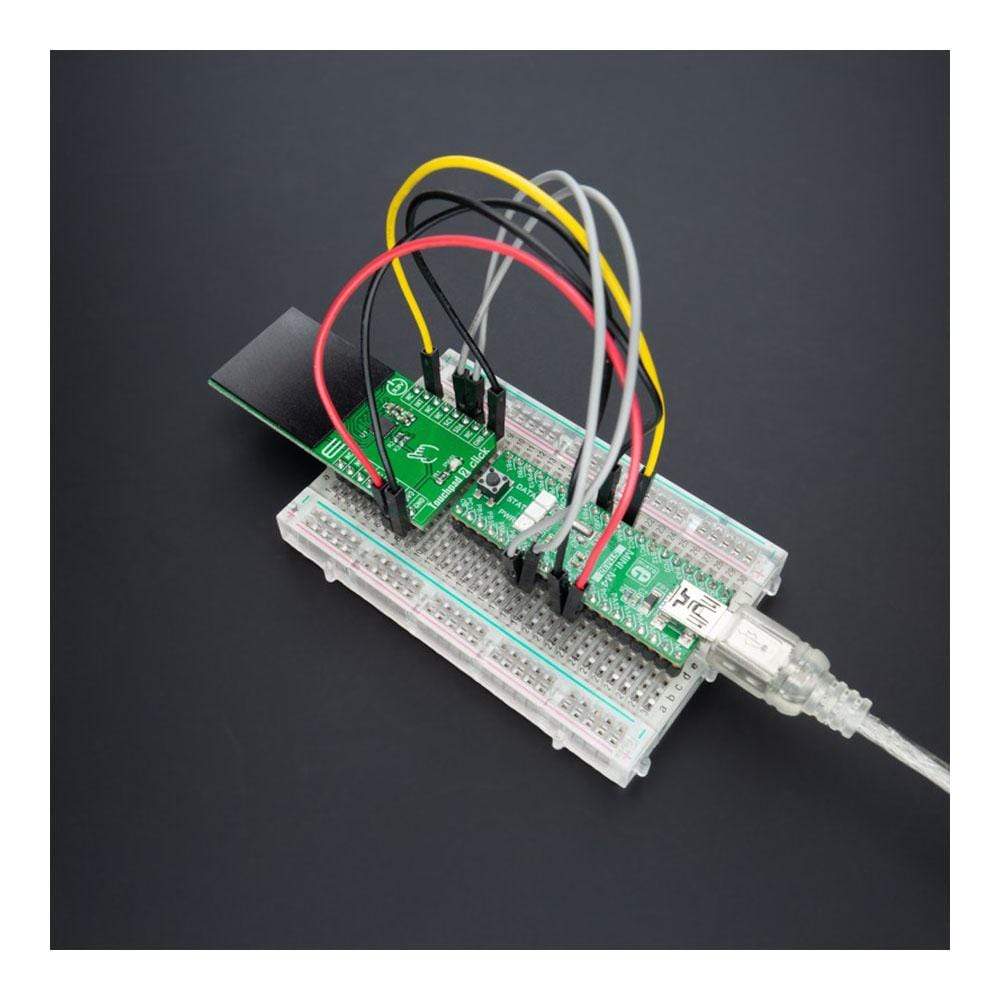
Overview
The TouchPad 2 Click Board™ is a compact add-on board that easily integrates projected capacitive touch into their applications. This board features the IQS525, a projected capacitive touch and proximity trackpad/touchscreen controller from Azoteq. It features best-in-class sensitivity, signal-to-noise ratio, and automatic tuning of electrodes, in addition to the multi-touch and multi-hover features. This Click Board™ is characterized by embedded gesture engine recognition for simple gestures (tap, swipes, hold) and built-in noise detection and filtering. This Click Board™ is suitable for human-machine interfaces, keypad or scrolling functions, single-finger gesture-based interfaces, and more.
The TouchPad 2 Click Board™ is supported by a mikroSDK compliant library, which includes functions that simplify software development. This Click Board™ comes as a thoroughly tested product, ready to be used on a system equipped with the mikroBUS™ socket.
Downloads
Le TouchPad 2 Click Board™ est une carte complémentaire compacte qui intègre facilement le toucher capacitif projeté dans leurs applications. Cette carte est équipée de l'IQS525, un contrôleur de pavé tactile/écran tactile capacitif projeté et de proximité d'Azoteq. Il offre la meilleure sensibilité de sa catégorie, le meilleur rapport signal/bruit et le réglage automatique des électrodes, en plus des fonctions multi-touch et multi-hover. Ce Click Board™ se caractérise par une reconnaissance intégrée du moteur de gestes pour les gestes simples (tapoter, balayer, maintenir) et une détection et un filtrage du bruit intégrés. Ce Click Board™ convient aux interfaces homme-machine, aux fonctions de clavier ou de défilement, aux interfaces basées sur les gestes à un seul doigt, etc.
Le TouchPad 2 Click Board™ est pris en charge par une bibliothèque compatible mikroSDK, qui comprend des fonctions qui simplifient le développement logiciel. Cette Click Board™ est un produit entièrement testé, prêt à être utilisé sur un système équipé du socket mikroBUS™.
| General Information | |
|---|---|
Part Number (SKU) |
MIKROE-4594
|
Manufacturer |
|
| Physical and Mechanical | |
Weight |
0.02 kg
|
| Other | |
Country of Origin |
|
HS Code Customs Tariff code
|
|
EAN |
8606027382512
|
Warranty |
|
Frequently Asked Questions
Have a Question?
Be the first to ask a question about this.







